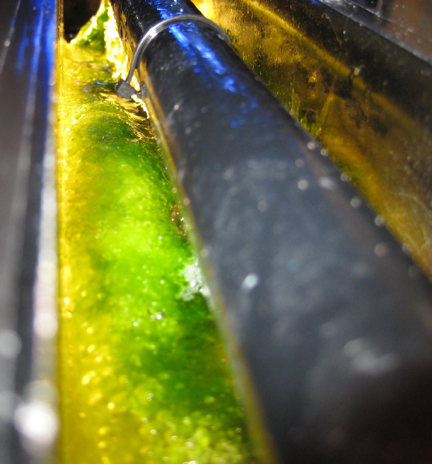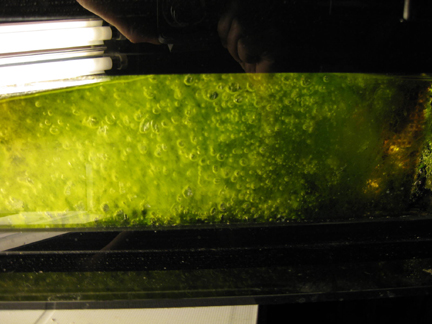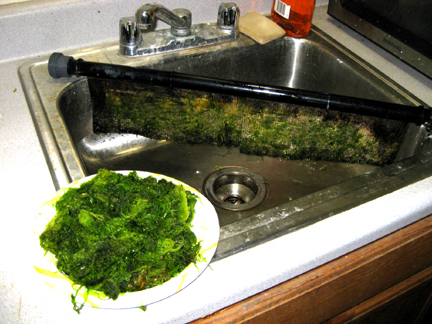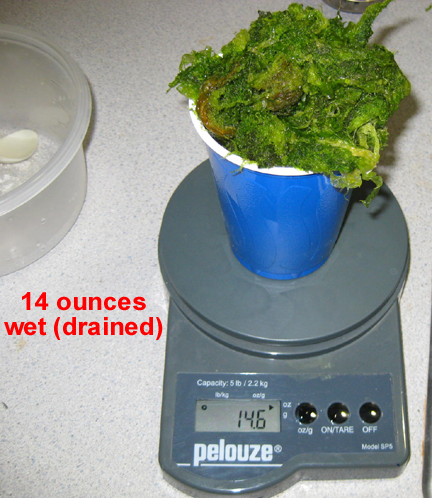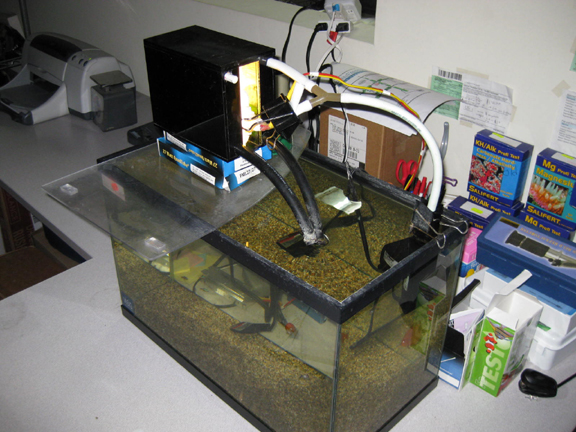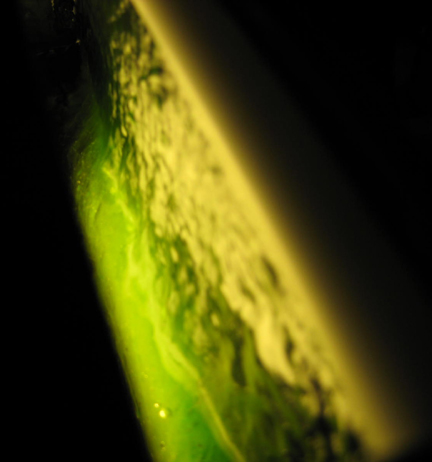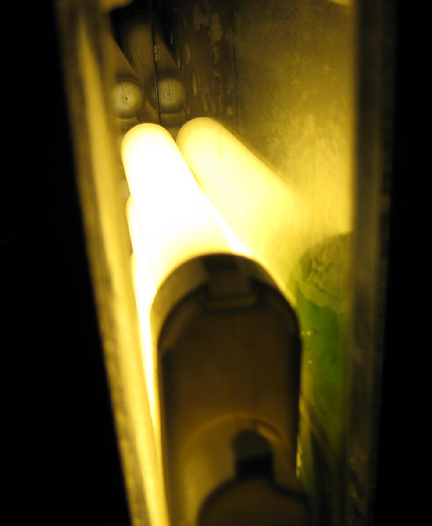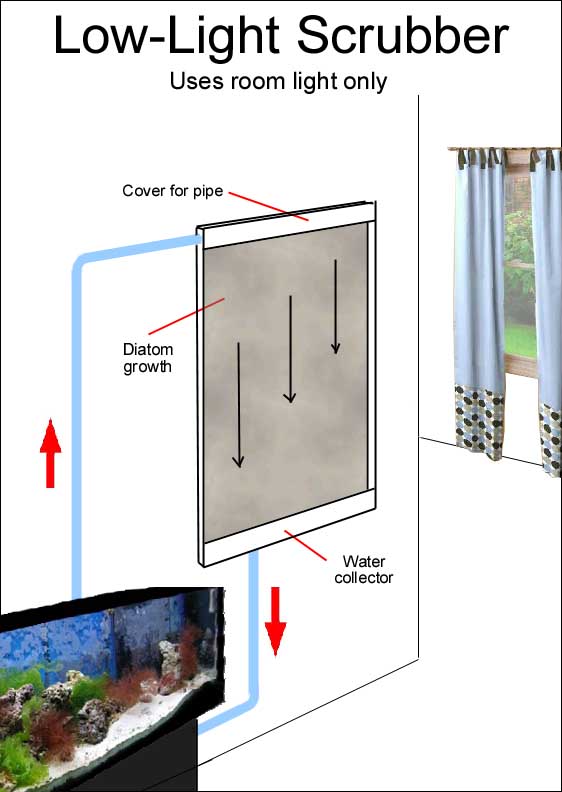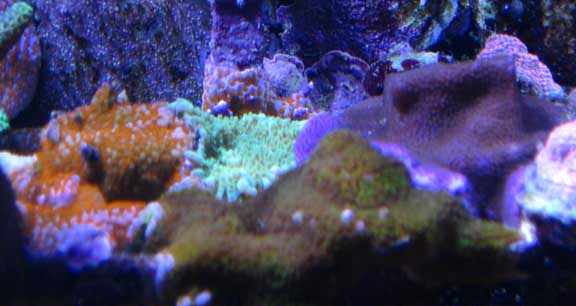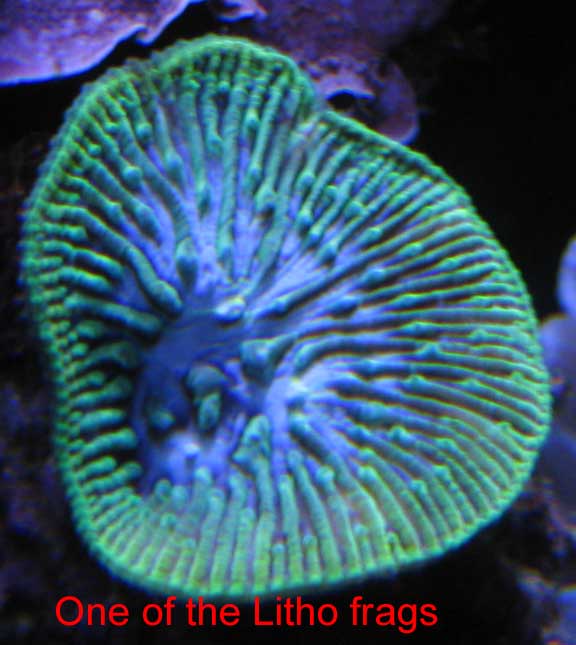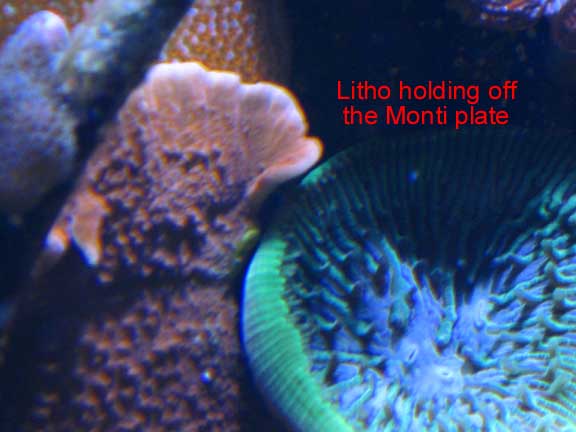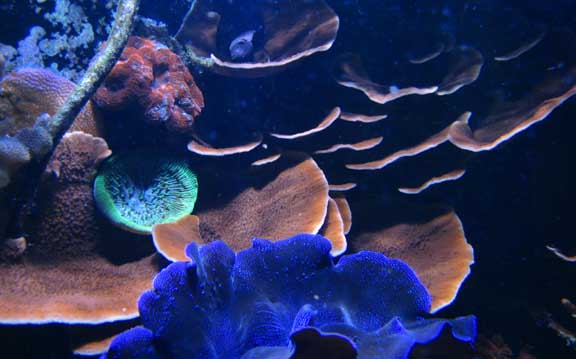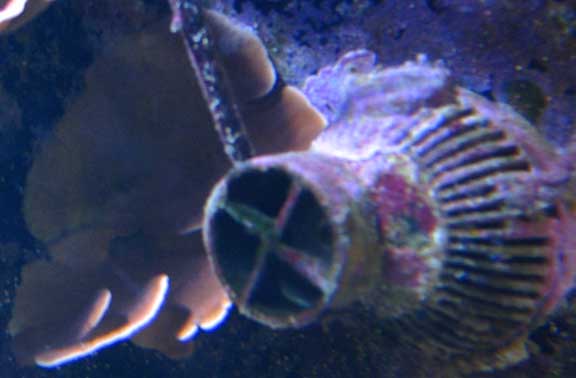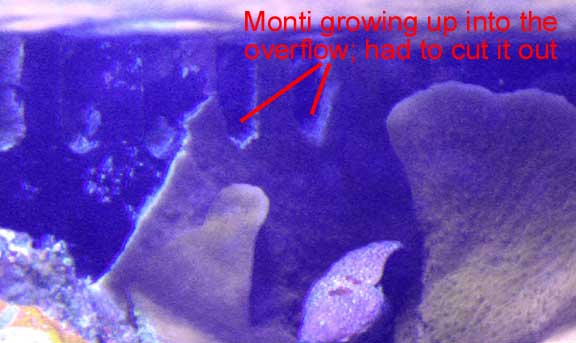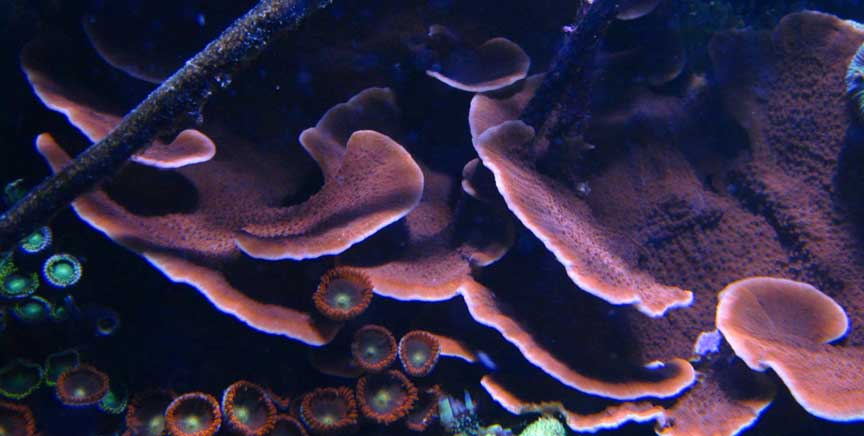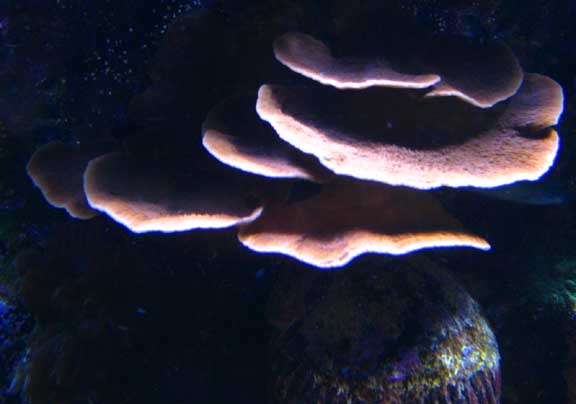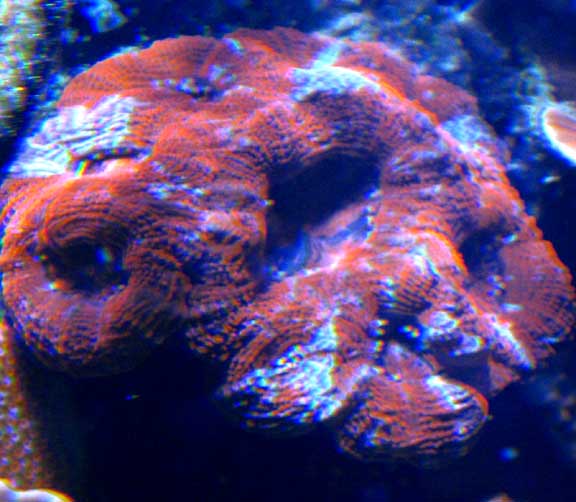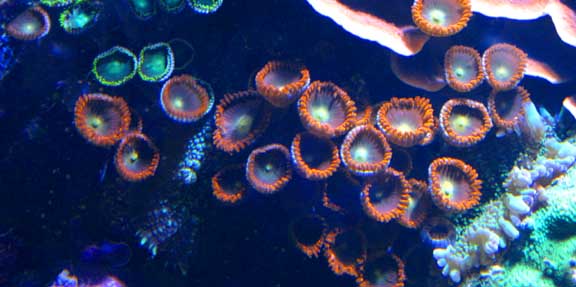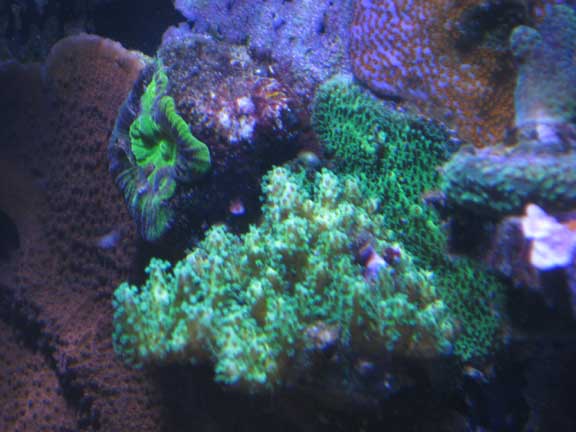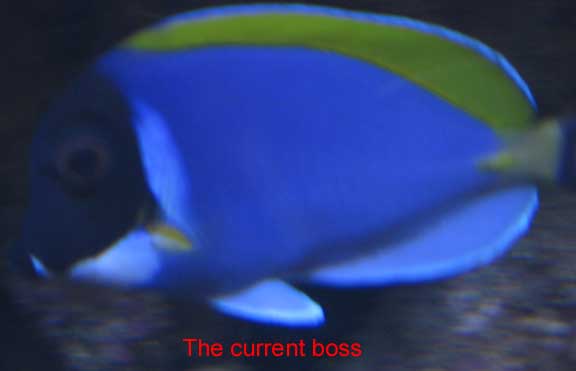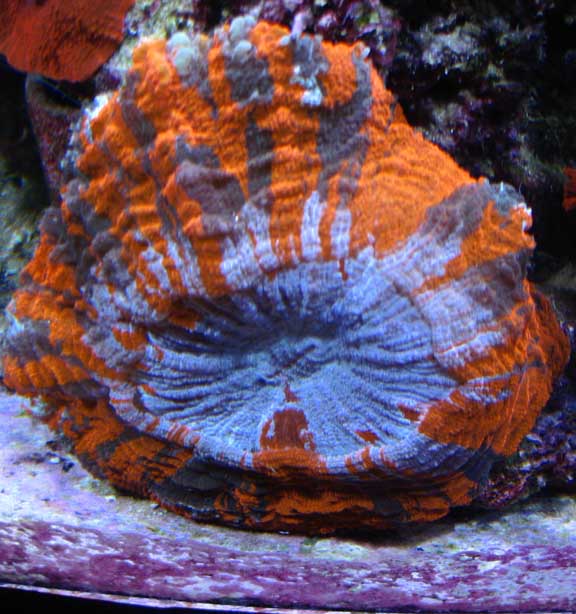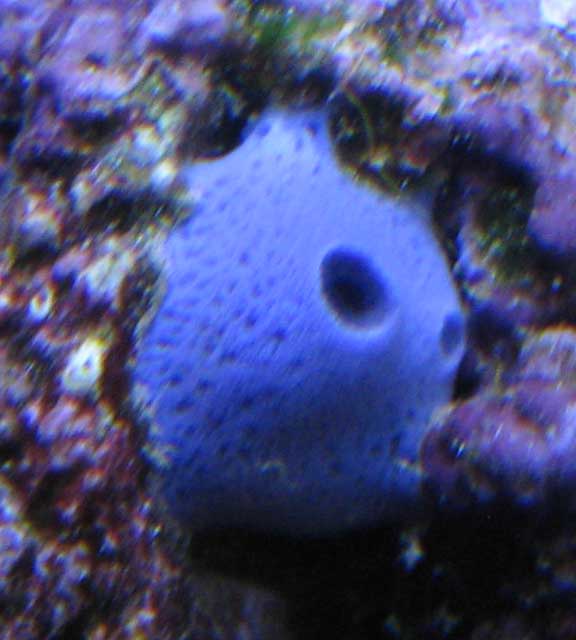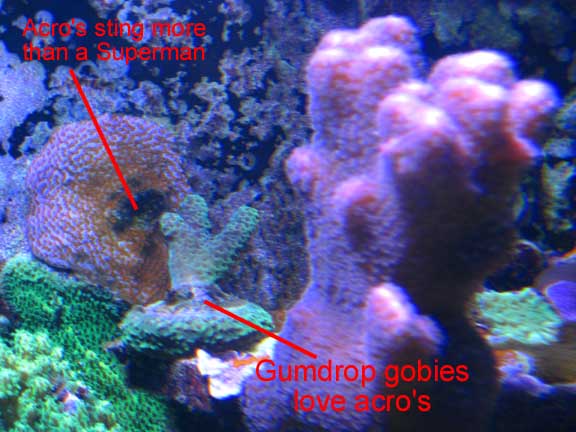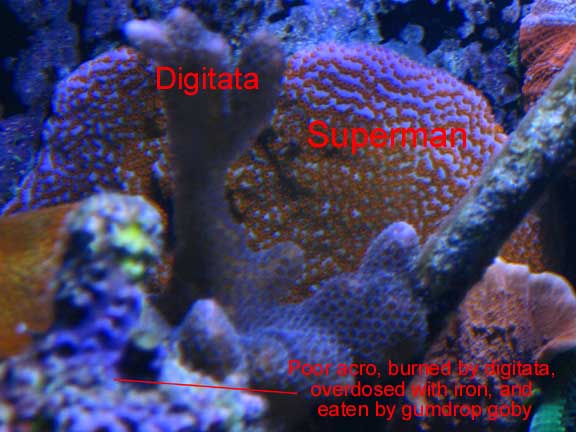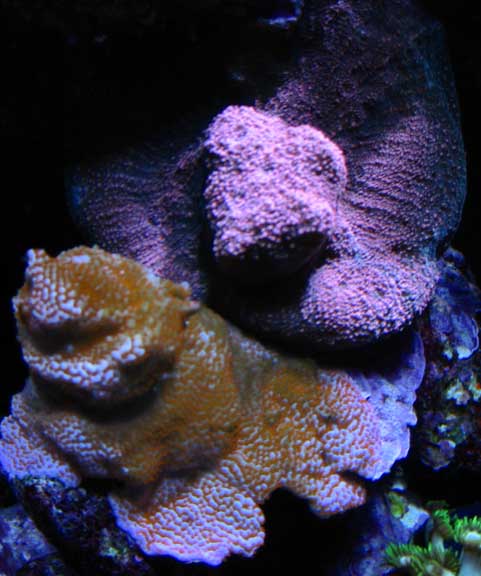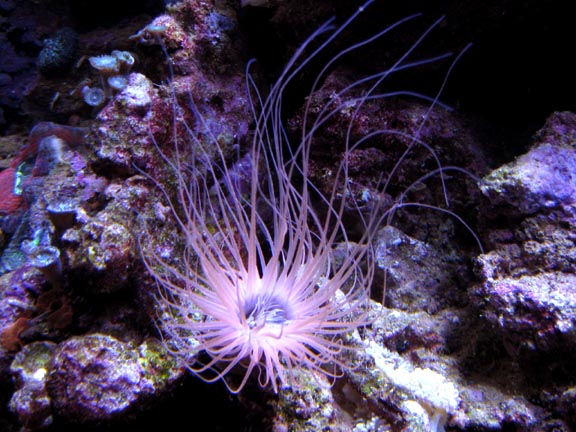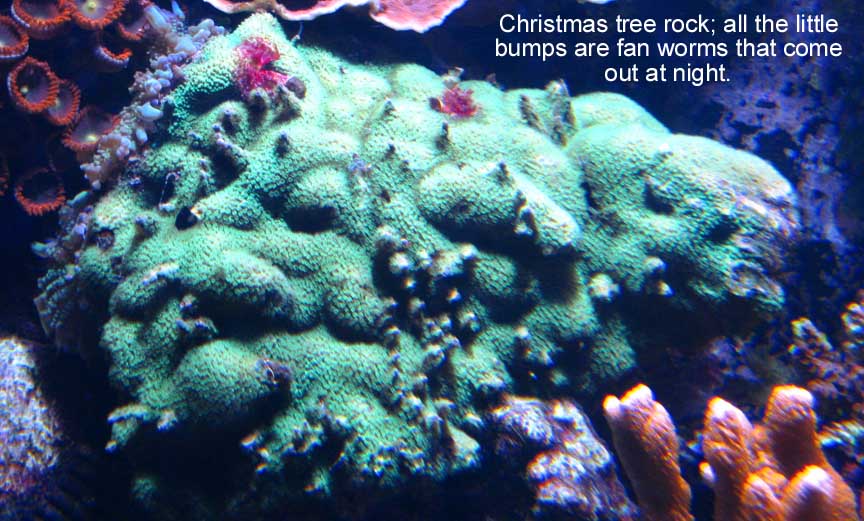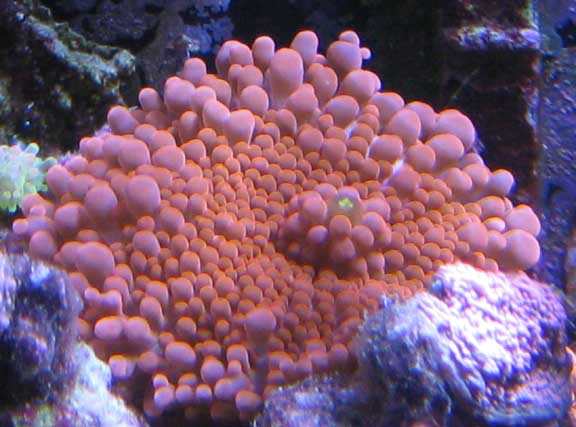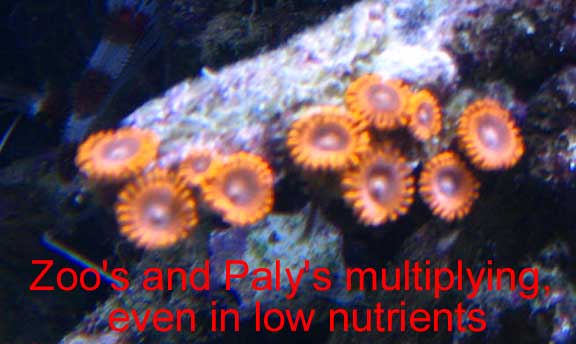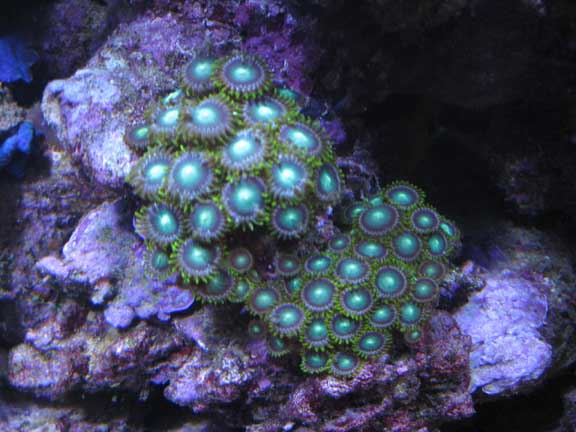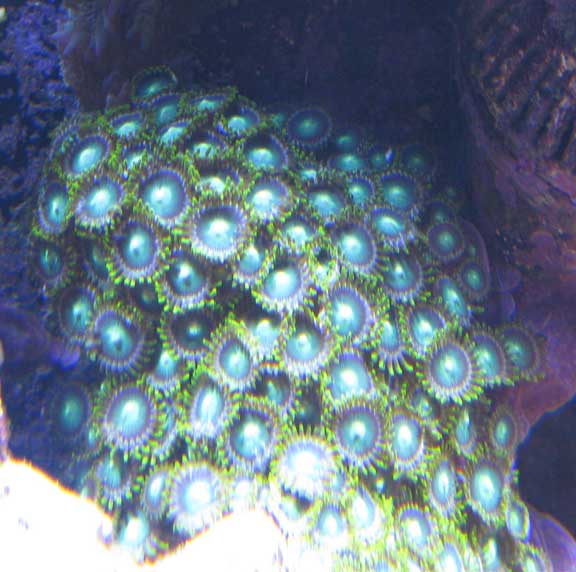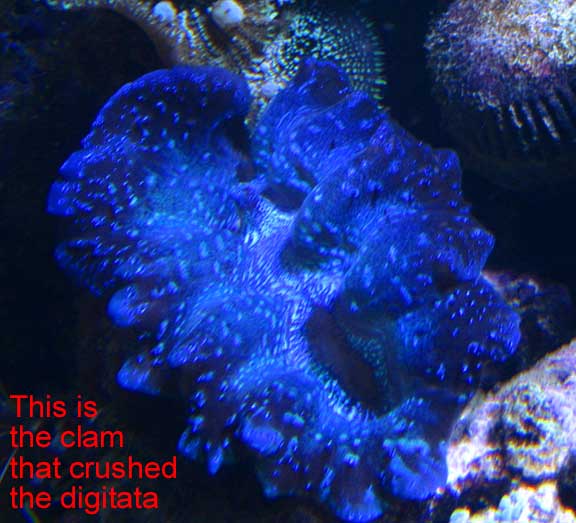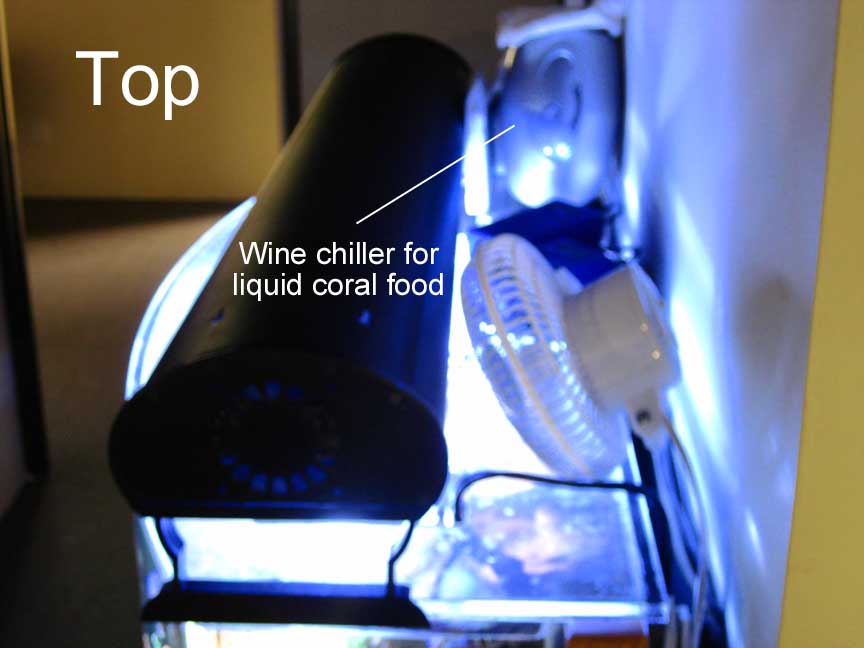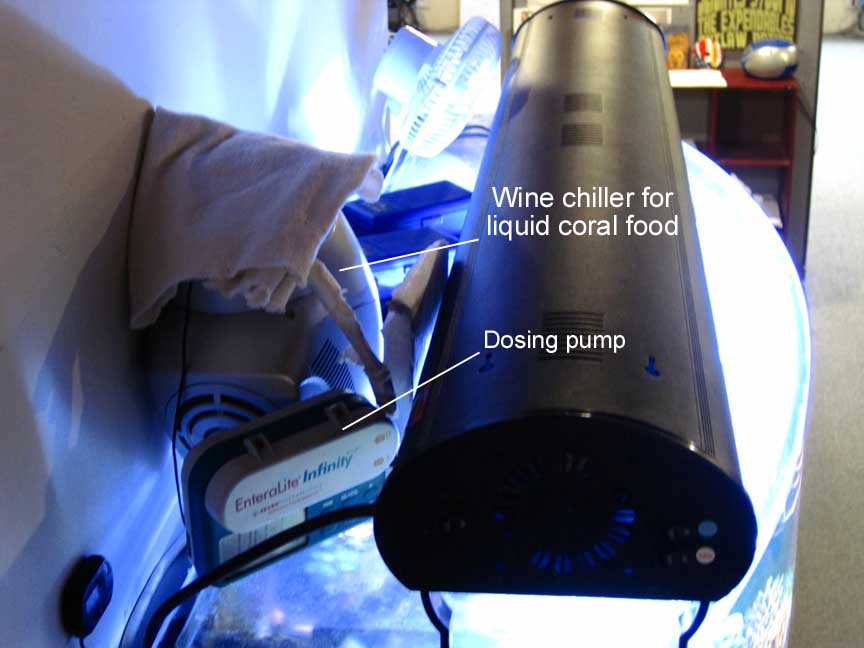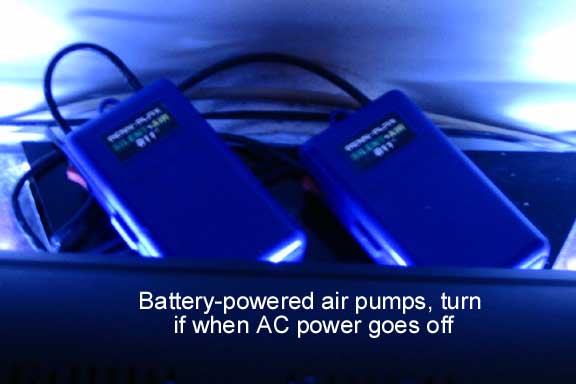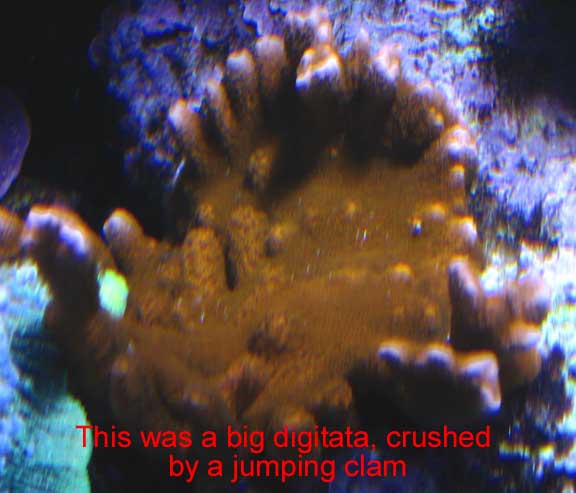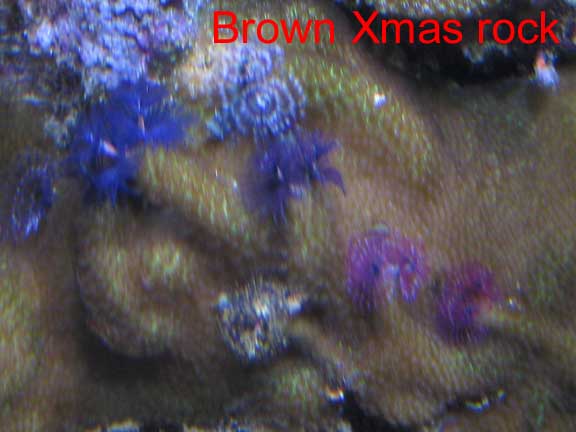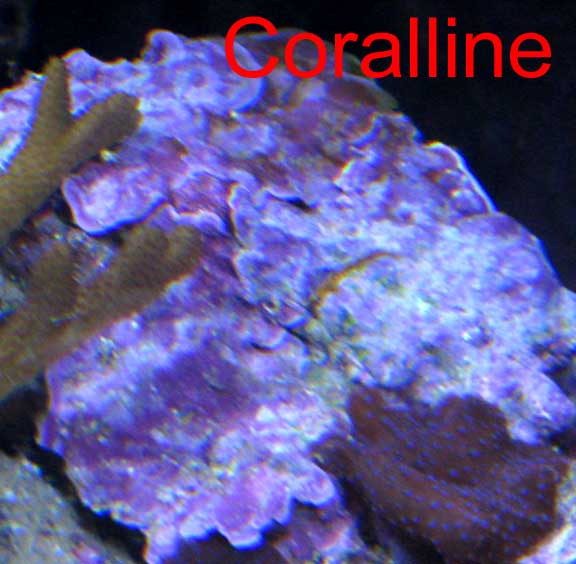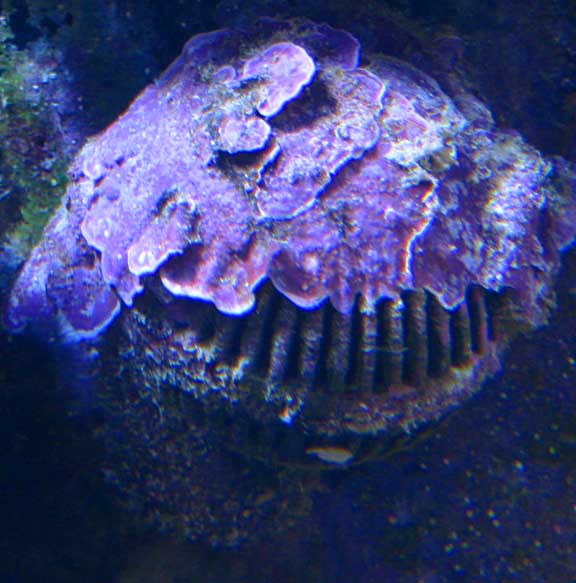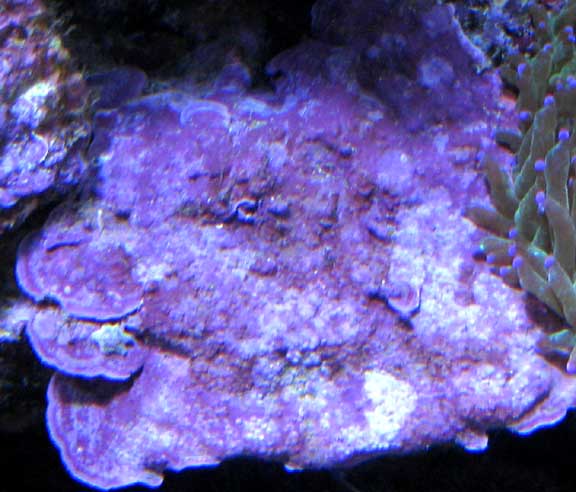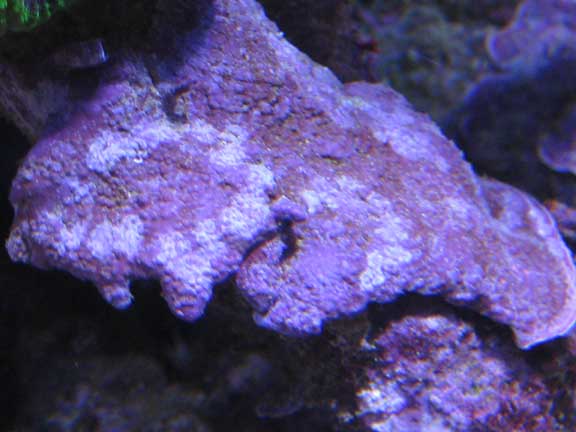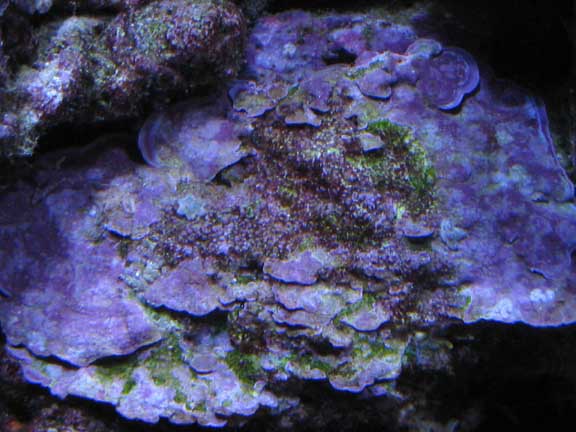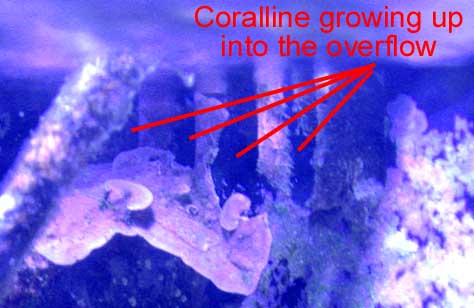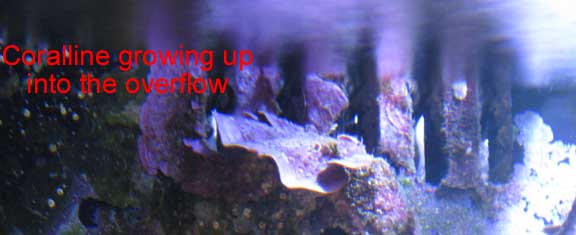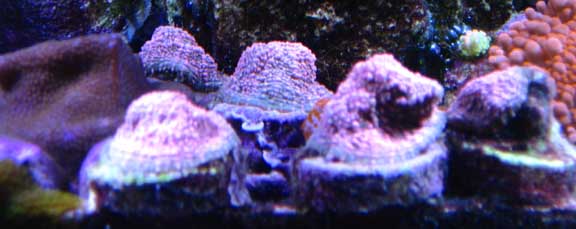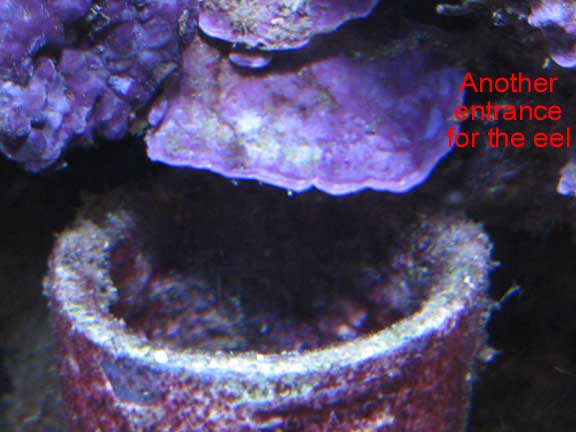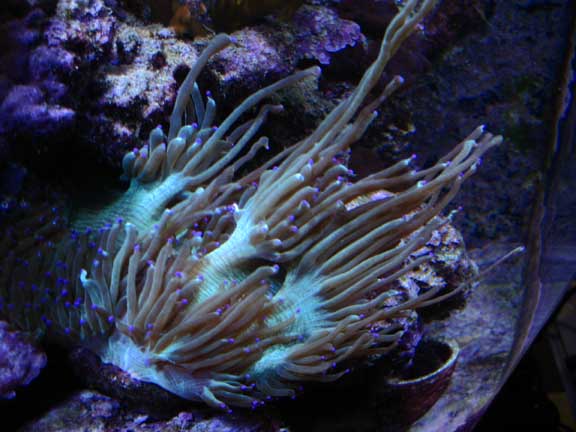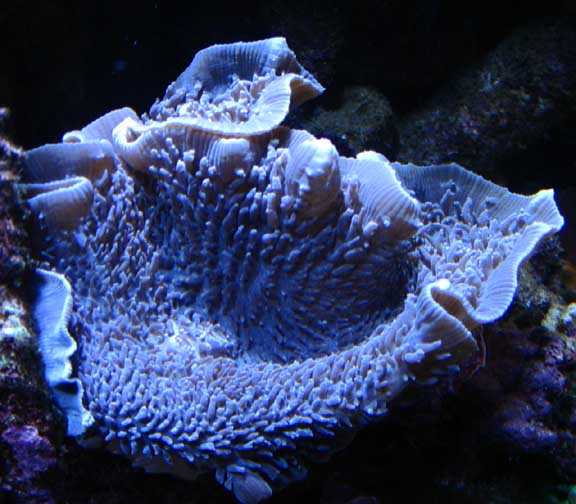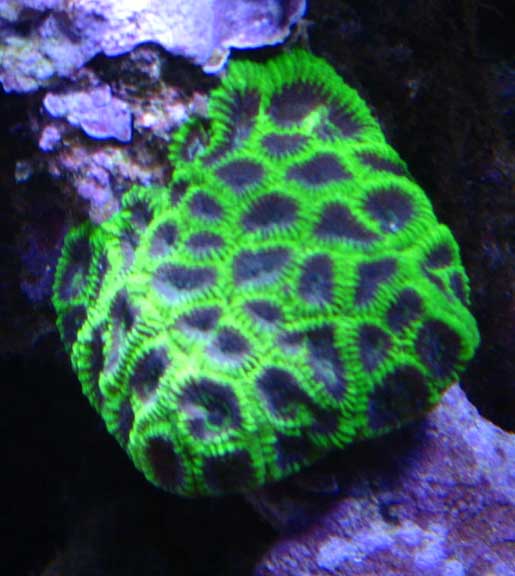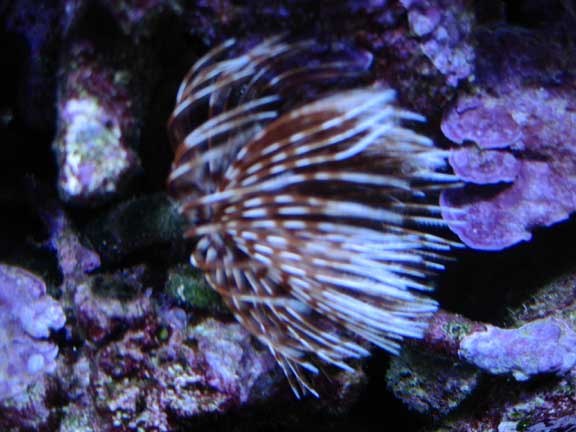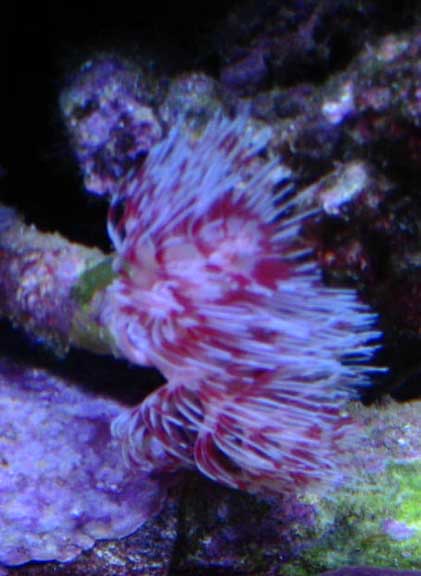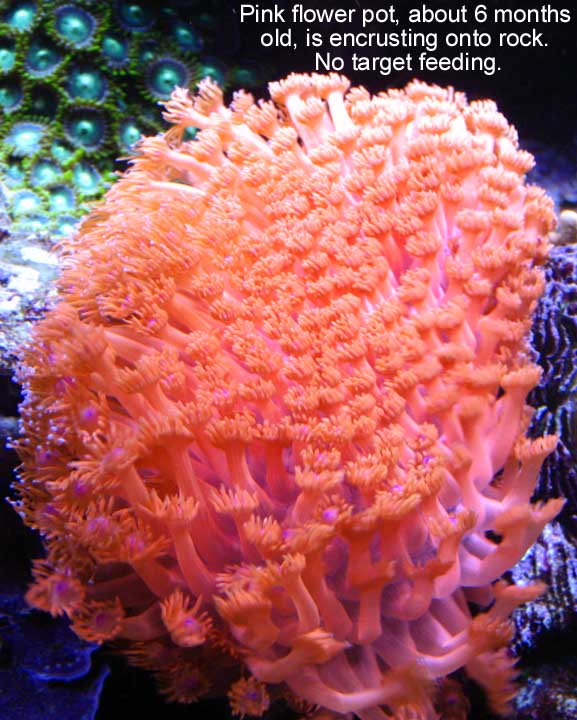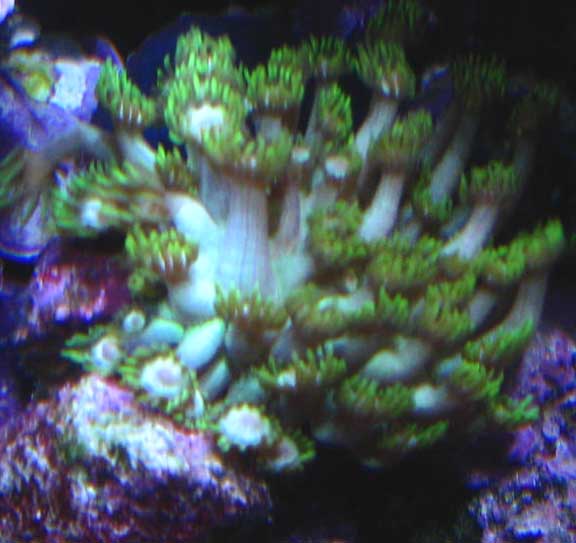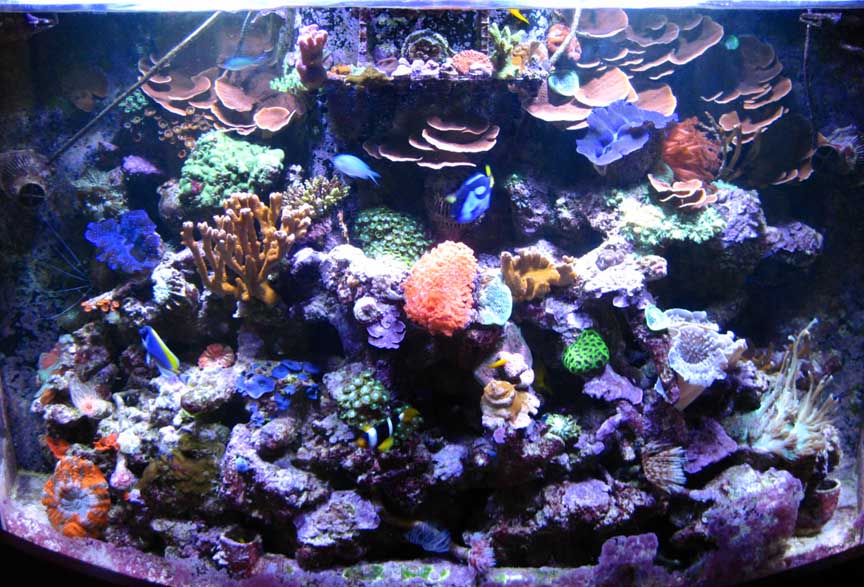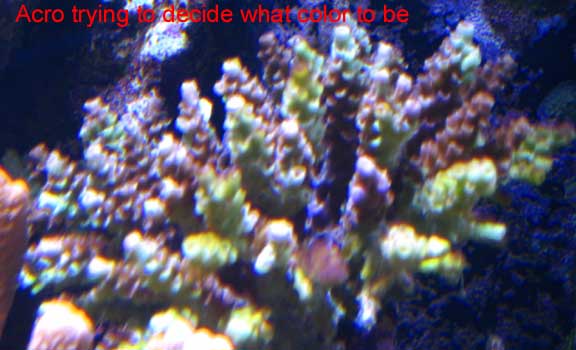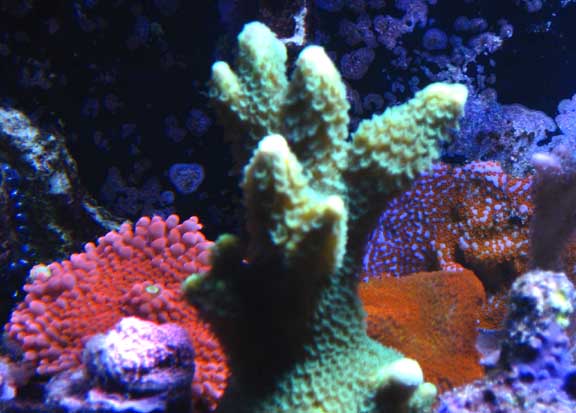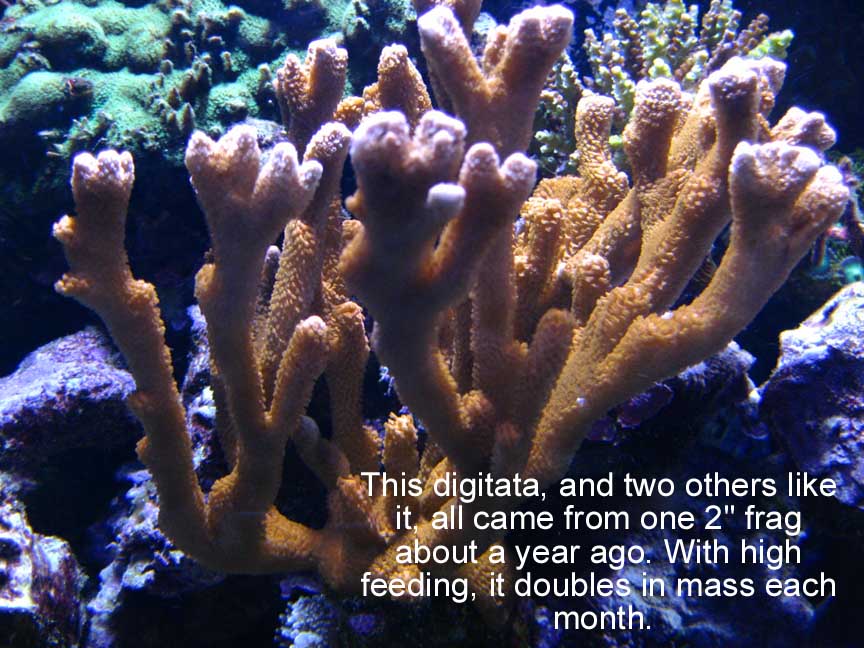santamonica
Member
Stevenkoh08 on the SG site: "i've my system running for quite awhile now... So far i nvr test no3, no2, po4 and amonia as i trust Algea scrubber alot. The algea did bloom but most of it is brown w/ abit of green. What's best of all is that my sand bed is clean, glass panel clean and the rocks u can't see any hair algea nor red/brown."
Geminianspark on the MOFIB site: "I currently have two tanks running with scrubbers. My 20g biocube is a mixed reef. The ONLY filtration on that tank is a 3.5" x 9" piece of acrylic with a piece of canvas glued on top that slants across the middle chamber with a fluroscent cabinet light over it. Granted, the size is smaller than SantaMonica's recommendations and i'm not technical so i have no clue how many gph run over it but that tank has been operational with ONLY the scrubber on it since october of '09. I have macro algaes popping up ... some red grac, and some grape calepura and a couple other things i've never seen before (I'm assuming due to the regular addition of calcium, mag and alk that i dose) but VERY Very small amounts of hair algae... less than a quarter inch spots in about three places that my snails keep mowed down for me. But again, mine is undersized for the size tank it's on so that, on top of the fact that i feed pretty heavily because of my sun coral has me hooked on these as filters. I only do water changes on this tank once a month or so and i only have to clean my glass about once every two weeks. Since putting that filter on the cube, it's been the best i've ever had my cube looking.. it's stocked full. I haven't had much fun building them as i'm not very handy with things but the difference in the way my corals looked with a skimmer and how they look with the scrubber is like someone added a super vitamin to the tank. From color to polyp extension to growth... i've seen improvements in all of them with no other changes in routine other than going an extra week without doing a water change. They have my vote."
Gigaah on the LR and MOFIB sites: "I personally vouch for the scrubber cycling. It dramaticly reduces the time from when you add water and rock to when you add fish. Generally a tank needs to have the beneficial bacteria multiply to the point where it can absorb the die off from the rocks and sustain livestock. The scrubber develops faster and starts removing the ammonia/nitrite/nitrate in a capacity to support livestock faster than having to just wait for the bacteria to grow to that point. After the bacteria of course does grow to do this the scrubber keeps doing what it does and creates what I've been calling "bullet proof chemistry" in your tank. Obviously as with any system the scrubber does have to be built properly in order to fill this role but that is a pretty beaten path by now and pretty specific instructions can be found as well. If it wasn't for the wealth of information I'd probably be doing things..what I'll from now on refer to as "The old way". I hope eventually to see massive fuges (not all fuges..just massive ones) and skimmers in a junk pile along with under-gravel filters and T12 lights. I will personally certify that an algaescrubber, if built properly, will withstand the most intense bioload and feeding! These devices are just unbelievably fantastic, its almost surreal. Highly oxygenated water, eats ammonia, nitrate, nitrite like crazy. Case and point, I stirred up some crap in my tank on two occasions. My ammonia spiked to 1.5 and 10 hrs later it was .25, 12hrs later it was zero. The scrubber on my main tank is about twice the reccomended size. A scrubber 3x the size would bear a heavy heavy bioload without skipping a beat, as long as its built properly (my biggest issue at first was making sure algae cannot grow into the water supply slit and choke the flow). I can feed my 55g 6+ cubes of food in a day and it won't even flinch. They eat phosphate and control algae with ease. To be honest, with all the bennefits from this more natural method of filtering its is obvious to me this is the best filtration system.. and especially for breeding as it adds great deal of oxygen to the water and keeps the parameters stable on a high bioload. If you have any questions at all about the system please ask. I can easily spew out build parameters as I've built two for myself and a two for friends. They are extreamly cheap too. I use no other method of filtering my tanks, mechanical, chemical, biological or otherwise on any of my tanks. I refuse to in fact."
Geminianspark on the MOFIB site: "I currently have two tanks running with scrubbers. My 20g biocube is a mixed reef. The ONLY filtration on that tank is a 3.5" x 9" piece of acrylic with a piece of canvas glued on top that slants across the middle chamber with a fluroscent cabinet light over it. Granted, the size is smaller than SantaMonica's recommendations and i'm not technical so i have no clue how many gph run over it but that tank has been operational with ONLY the scrubber on it since october of '09. I have macro algaes popping up ... some red grac, and some grape calepura and a couple other things i've never seen before (I'm assuming due to the regular addition of calcium, mag and alk that i dose) but VERY Very small amounts of hair algae... less than a quarter inch spots in about three places that my snails keep mowed down for me. But again, mine is undersized for the size tank it's on so that, on top of the fact that i feed pretty heavily because of my sun coral has me hooked on these as filters. I only do water changes on this tank once a month or so and i only have to clean my glass about once every two weeks. Since putting that filter on the cube, it's been the best i've ever had my cube looking.. it's stocked full. I haven't had much fun building them as i'm not very handy with things but the difference in the way my corals looked with a skimmer and how they look with the scrubber is like someone added a super vitamin to the tank. From color to polyp extension to growth... i've seen improvements in all of them with no other changes in routine other than going an extra week without doing a water change. They have my vote."
Gigaah on the LR and MOFIB sites: "I personally vouch for the scrubber cycling. It dramaticly reduces the time from when you add water and rock to when you add fish. Generally a tank needs to have the beneficial bacteria multiply to the point where it can absorb the die off from the rocks and sustain livestock. The scrubber develops faster and starts removing the ammonia/nitrite/nitrate in a capacity to support livestock faster than having to just wait for the bacteria to grow to that point. After the bacteria of course does grow to do this the scrubber keeps doing what it does and creates what I've been calling "bullet proof chemistry" in your tank. Obviously as with any system the scrubber does have to be built properly in order to fill this role but that is a pretty beaten path by now and pretty specific instructions can be found as well. If it wasn't for the wealth of information I'd probably be doing things..what I'll from now on refer to as "The old way". I hope eventually to see massive fuges (not all fuges..just massive ones) and skimmers in a junk pile along with under-gravel filters and T12 lights. I will personally certify that an algaescrubber, if built properly, will withstand the most intense bioload and feeding! These devices are just unbelievably fantastic, its almost surreal. Highly oxygenated water, eats ammonia, nitrate, nitrite like crazy. Case and point, I stirred up some crap in my tank on two occasions. My ammonia spiked to 1.5 and 10 hrs later it was .25, 12hrs later it was zero. The scrubber on my main tank is about twice the reccomended size. A scrubber 3x the size would bear a heavy heavy bioload without skipping a beat, as long as its built properly (my biggest issue at first was making sure algae cannot grow into the water supply slit and choke the flow). I can feed my 55g 6+ cubes of food in a day and it won't even flinch. They eat phosphate and control algae with ease. To be honest, with all the bennefits from this more natural method of filtering its is obvious to me this is the best filtration system.. and especially for breeding as it adds great deal of oxygen to the water and keeps the parameters stable on a high bioload. If you have any questions at all about the system please ask. I can easily spew out build parameters as I've built two for myself and a two for friends. They are extreamly cheap too. I use no other method of filtering my tanks, mechanical, chemical, biological or otherwise on any of my tanks. I refuse to in fact."


